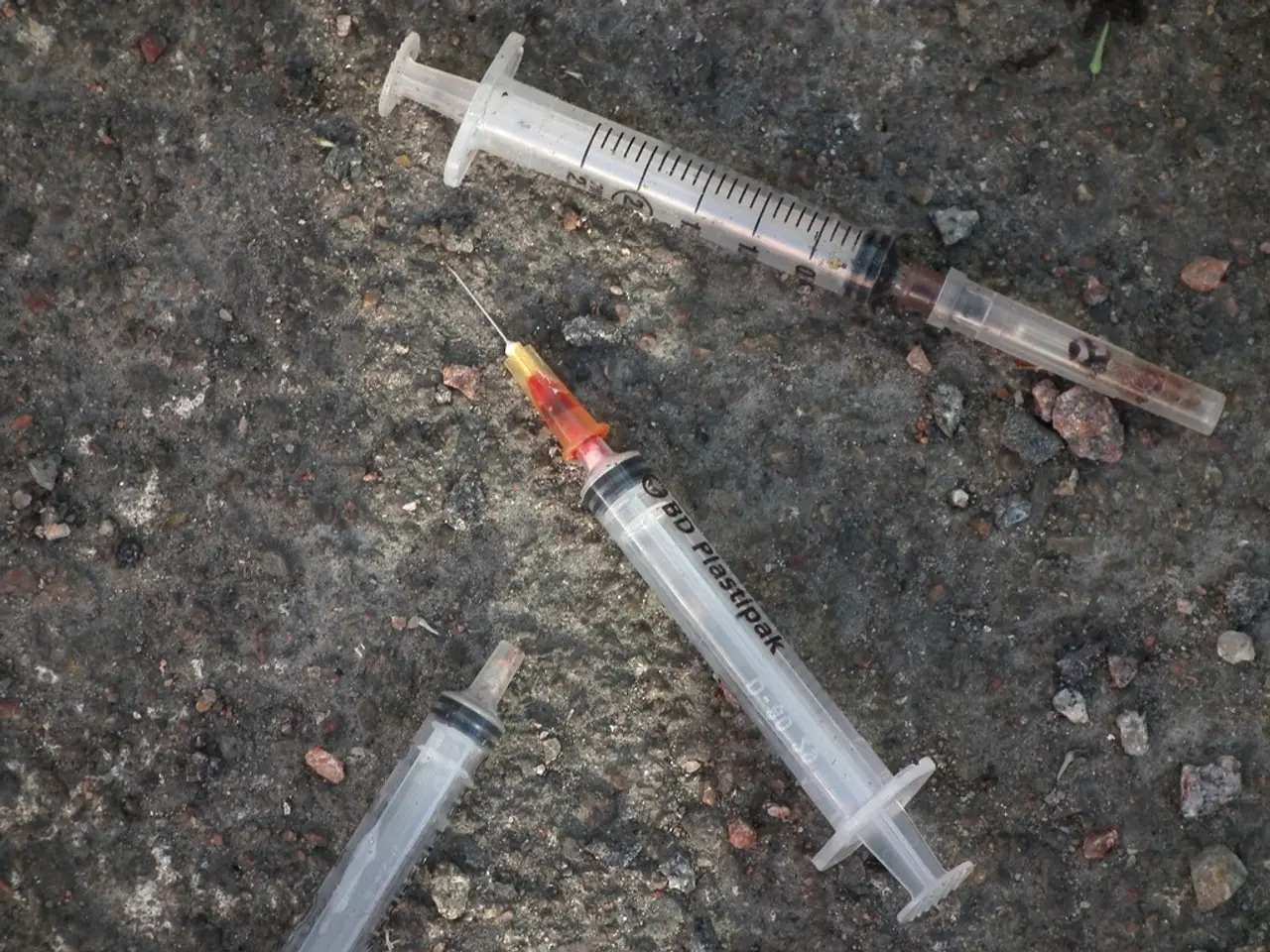Biopsy Needles for the Liver: Varieties, Dimensions, and What You Can Anticipate
A liver biopsy is a crucial medical test that helps doctors diagnose and assess conditions affecting the liver. This non-surgical procedure involves collecting a small sample of liver tissue, which can be done either percutaneously (through a small incision in the abdomen) or transjugularly (through a tube placed in the jugular vein in the neck).
Before the procedure, a local anesthetic is used to numb the area, preventing pain from the incision or the needle. Depending on the facility, a person may be able to access their results through an online portal.
Two main types of liver biopsy needles are used: aspiration and cutting needles.
Aspiration needles, such as fine needle aspiration (FNA), use suction to withdraw cells or fluid from the liver. These needles typically collect individual cells or small clusters of cells, suitable for cytological examination. Aspiration is less invasive and often uses a thinner needle, causing less tissue trauma but providing less structural tissue architecture.
On the other hand, cutting needles (often used in core needle biopsy) are designed to cut and extract a cylindrical core of liver tissue. These needles have a hollow bore with a cutting mechanism that slices a tissue core as the needle advances. The retrieved tissue retains histological architecture, helping pathologists examine tissue structure, fibrosis, and other histological features better than aspiration alone.
The choice between aspiration and cutting needles depends on the clinical question, required diagnostic detail, and balance between invasiveness and diagnostic yield. For instance, aspiration needles might be preferred for cytological examinations, while cutting needles could be more appropriate for histological analyses.
It is essential to note that while larger needles may have a higher tendency to cause complications, such as bleeding, this has not been consistently replicated in human trials. In both percutaneous and transjugular liver biopsies, the doctor will numb the area first using a local anesthetic before inserting the needle.
Following a liver biopsy, a person may feel some pressure or mild discomfort during the procedure, but pain is a complication following the procedure and can be managed with pain relievers. Following a transjugular liver biopsy, a person will need to stay for 2-6 hours for observation before going home.
Once the lab has processed the sample, the results of a liver biopsy will be sent directly to the doctor's office. The doctor will explain the results and discuss the next steps, which may be treatment or additional testing.
In conclusion, understanding the differences between aspiration and cutting liver biopsy needles can help patients make informed decisions about their health. By working closely with their healthcare providers, patients can ensure they receive the most accurate and comprehensive diagnosis possible.
Other non-surgical liver procedures beyond biopsy might include radiofrequency ablation, which uses heat to destroy abnormal liver tissue, and transarterial chemoembolization, where chemotherapy drugs are injected directly into the liver tumor followed by embolization to prevent the drugs from spreading.
Under the broader umbrella of science and medical-conditions related to liver health-and-wellness, research is ongoing to develop more minimally invasive treatment methods for various liver medical-conditions. These innovations may lead to improved patient outcomes, decreased recovery times, and a higher quality of life.




